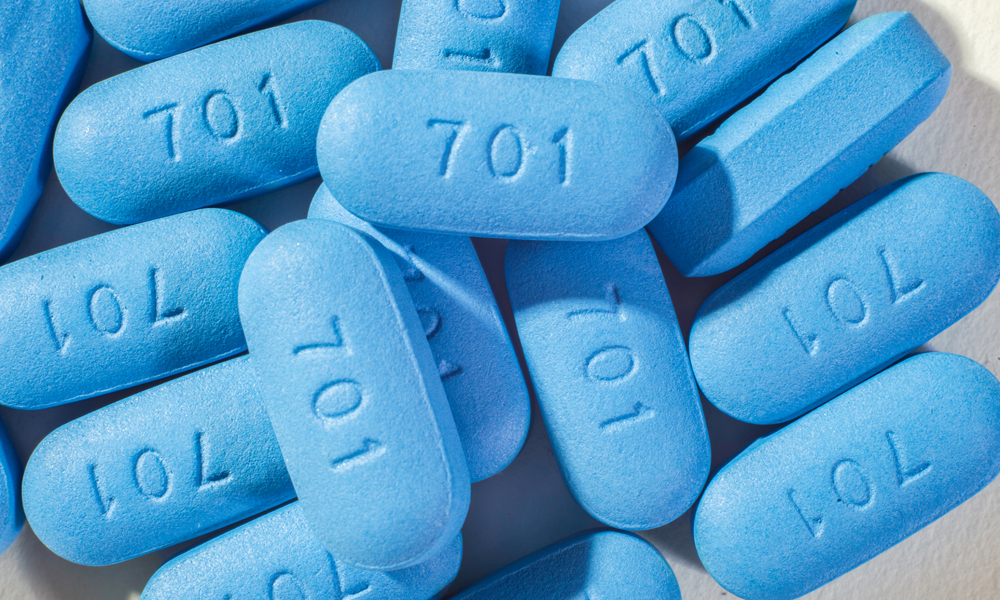Even though the medication helps sexually active Canadians avoid the threat of contracting HIV, the cost deters many Canadians from actually buying it…
By Bobby Box
I’ve been a sex writer for the better half of the decade, and I am an openly bisexual man. That being the case, many people are surprised that I am not on PrEP, the daily oral medication that the US Centers for Disease Control and Prevention says reduces the chances of being infected with HIV by over 90 per cent. Don’t get me wrong, I want to be on it. But as a freelance writer, I don’t have insurance, and without insurance, PrEP and similar drugs are heinously overpriced and unaffordable.
I know I am not alone. Access to PrEP can be difficult, even with insurance. A co-worker, who recently switched insurance companies, described the experience of obtaining PrEP as “one for the ages,” adding that he “couldn’t imagine the difficulty [of getting it] without work insurance, even though you always hear of programs to help out.”
The truth is, it’s extraordinarily difficult, even with the programs available. To help better understand the process, IN spoke with Michael Fanous, a pharmacist and the owner of MedsExpert.ca in Toronto, which bills itself as “Canada’s only LGBTQ pharmacy.” The centre boastsan all-queer staff dedicated to helping clients navigate the complicated and often confusing insurance landscape in Ontario.
Below is key information for those seeking PrEP in Canada. (Note: In many instances in this article, “PrEP” is used as a blanket term to categorize all HIV prevention medications available in Canada.)
Access to PrEP is different in every province
Every province and territory has its own program for pharmacare. For instance, there is universal coverage of PrEP in British Columbia and Alberta, but not in Ontario, where the provincial government offers a host of different programs (most of which, I will add, are incredibly difficult to navigate). There are also programs offered by the federal government that cover PrEP for Indigenous people with status cards and for refugees.
There are many programs (provincial and federal) that people can apply to for prescription drug coverage. But again, eligibility for coverage varies among the provinces and territories.
Fanous uses Ontario as an example. “Depending on age, income and disability, someone in Ontario may be eligible for OHIP+ [for those over 25 years of age with a health card and no other private plan coverage], Ontario Disability Support Program [ODSP], Ontario Works [OW] or the Seniors Program [65 years or older],” he says. “All Ontarians with a valid health card in the province [OHIP] are eligible to apply for the Trillium Drug Program.”
It’s worth mentioning that when yours truly called Trillium to inquire about PrEP coverage, the woman on the phone responded, “What’s PrEP?”
Costs associated with PrEP
There are four generic versions of emtricitabine-tenofovir DF (the generic name for the medication used to treat HIV), priced around $200-$280 per month for those without insurance in Ontario. Truvada (the brand name drug) is priced around $1,000 per month. “However, it is my hope that one day Ontario will follow suit with BC and Alberta in giving universal coverage to all people taking antiretroviral drugs [for PrEP, or PEP (an option for someone who thinks they’ve recently been exposed to HIV) or HIV treatment],” Fanous says.
If using the Trillium Drug Program, then prescription drug costs are covered entirely once the person’s quarterly deductible is satisfied. However, there are stipulations to this plan. People who make over $75,000 per year will not reach their deductible if they are using it for their PrEP prescription only.
Clients who are covered by ODSP, OW, OHIP+ or the Seniors Program should not have to pay anything, but there may be an annual deductible for some high-income seniors.
With private insurance, what you’ll spend on PrEP depends on the plan. Typically, if someone has private drug insurance that covers 100 per cent of the cost of their medication and dispensing fee, PrEP costs nothing. However, if someone has 80 per cent drug coverage, they will pay roughly $50 per month (or a much steeper amount if they are prescribed Truvada).
The recommended process to obtain PrEP
The first step to getting on PrEP is to visit a healthcare professional who is familiar with all aspects of HIV prevention, including counselling, medication, and links to the necessary care and resources. Unfortunately, a discernible number of medical practitioners are not familiar with HIV-prevention drugs and will not be of much use. “There remains a lot of HIV-related stigma both in the medical and the LGBTQ+ communities that stems from misinformation and a lot of individuals who are unwilling to update their knowledge of HIV treatment and prevention,” Fanous says.
There are many online and brick-and-mortar resources available that can help connect you with proper medical professionals, including MedsExpert and Rainbow Health Education in Ontario. Once you’ve found an informed resource, simply follow the doctor’s orders; they will handle the rest.
Will HIV medications ever be accessible to all?
In order for HIV medications to become universal, it is important to educate not only the LGBTQ+ community, but also primary care providers to be competent and comfortable in HIV, which is not exclusive to the LGBT community.
“We understand that gay, bisexual and other men who have sex with men are at the highest risk of HIV, but so are other communities,” Fanous says. “Indigenous and Afro-Caribbean Canadians as well as IV drug users are all at high risk of HIV, and yet so many providers are not informed about the science behind pre- and post-exposure prophylaxis or HIV prevention in those populations.”
For that reason, he continues, there needs to be a two-pronged approach to fighting this stigma: educating community members and updating the professionals who should be serving them. In doing so, we’re benefitting our community so that we can be better served by those dedicated to our health.
BOBBY BOX is a prolific freelance journalist in Hamilton, Ont. He currently works as contributing editor at Playboy.com and has had the privilege of speaking with the world’s most recognized drag queens, including Trixie Mattel and Alaska Thunderfuck. While proud of his work, Bobby is not above begging. He asks that you follow him on Twitter at @bobbyboxington.






POST A COMMENT